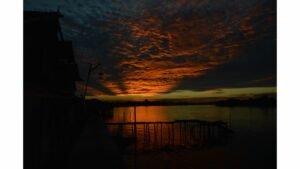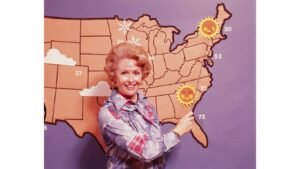Exploring Microclimates in the U.S.: Surprising Weather Variations
The United States is a vast canvas of geographical diversity, painted with lush forests, scorching deserts, and towering mountain ranges. This tapestry of landscapes isn’t just visually stunning; it also gives rise to a myriad of microclimates that can astonish even the most seasoned weather enthusiast. From dramatically different conditions within a few miles to unique weather patterns that define local culture and economy, microclimates are a treasure trove for anyone curious about the science of weather. In this exploration, we’ll set our sights on the U.S. microclimates, examine their impact on local environments, and discuss how they influence the day-to-day weather of these regions.
Unveiling the Mysteries of Microclimates
Microclimates are small-scale areas within a given region that have a different climate than adjacent areas. Typically, these differences are due to variations in terrain, altitude, or proximity to large bodies of water. The study of microclimates is crucial for understanding the ecology and environmental dynamics at play in local ecosystems. Microclimates matter because they influence the types of flora and fauna that can thrive in an area and can even have an impact on human health and behavior.
In the U.S., microclimates are as varied as the landscapes that host them, leading to stark contrasts in weather that can occur over relatively short distances. From the cool, fog-draped coastlines of the Pacific Northwest to the arid deserts of the Southwest, the nation is a patchwork of unique weather systems that deserve our contemplation.
Diverse Microclimates Across the U.S.
West Coast vs. East Coast
On a country scale, one of the most pronounced differences in microclimates can be observed by comparing the coasts. The West Coast, with its marine influence and mountainous barriers, sees considerable variation in weather. The eastern slopes of the Cascade and Sierra Nevada mountain ranges, for example, are significantly drier and warmer than the western slopes.
Conversely, the East Coast experiences a more gradual change in climate due to the flatter terrain and the moderating effect of the Atlantic Ocean. Cities like Miami and New York can experience very distinct seasons but have less daily variation than coastal cities in the west, making it easier to predict the day’s weather even in winter or during a storm system.
Mountainous Regions
Mountain ranges stand as natural partitions for air masses, which leads to drastic climatic changes over short vertical distances. Colorado, known for its Rocky Mountains, exemplifies this well with its famous Chinook winds. These warm, dry gusts can cause rapid temperature spikes, melting snow and ice in a matter of hours, and have even been known to warm locations by as much as 40°F in one day.
Coastal Areas
Coastal microclimates are formed by their closeness to large bodies of water, which act as a heat sink. During the day, the land and water heat up and cool down differently, influencing local sea breezes and cloud cover. For instance, San Francisco Bay’s unique geography and the cold current of the Pacific Ocean create the city’s renowned year-round coolness, often shrouded in fog, while just across the water, the warmer, sunnier East Bay thrives in another world of climate.
Impact on Weather Patterns
The influence of microclimates on the U.S.’s wider weather patterns is considerable, affecting everything from temperature to precipitation, and even more complex systems like wind currents.
Temperature Variations
Microclimates can lead to significant temperature swings, with the potential to create a variety of ecosystems within a single region. The U.S. boasts areas like Arizona’s Sonoran Desert, with its searing summer heat and chilly desert nights, contrasting sharply with the more temperate, coastal-influenced ecosystem around San Diego.
Precipitation Variances
Coastal regions and mountainous areas often receive more rainfall due to orographic lift, a process where air is forced upward by the land, causing it to cool and form clouds. Conversely, many of the U.S.’s desert regions lie in rain shadows, receiving little precipitation due to the blocking of moist air by mountains. An extreme example is the stark contrast between the lush, wet Olympic Peninsula in Washington and the dry, arid conditions of the Olympic rain shadow.
Wind Patterns
Microclimates can also give rise to local wind patterns such as coastal sea breezes and mountain-valley breezes. In Hawaii, for example, the trade winds, funneled by the high mountain ranges and specific coastal formations, direct the island’s weather patterns. These localized wind systems play a crucial role in the dispersal of pollen, sea fog, and more, greatly impacting the local environment and human activity.
Notable Microclimate Phenomena
Across the U.S., certain microclimate phenomena have become famous for their influence on the local environment and human activity.
Chinook Winds in the Rockies
The Chinook is not just a warm breeze; it’s a defining characteristic of life in the Rocky Mountain region. These winds can occur across the western and central U.S., but they are most notable in the Rockies. Colorado residents are well-acquainted with the rapid temperature changes and physical effects of these warm, downsloping winds. The term “Chinook” has even become synonymous with the concept of a quick weather change, such as a warm spell in winter.
Marine Layer in California
California’s coastal areas, particularly in Southern California, experience a phenomenon called the marine layer. This is a cool, damp air mass that moves in off the ocean and can blank out the sun for days at a time. While this brings a break from the heat for coastal areas, it can also lead to a phenomenon known as “May Gray” or “June Gloom,” where the marine layer extends inland, making for some gloomy spring and early summer days in major cities like Los Angeles and San Diego.
Lake-Effect Snow in the Great Lakes Region
The interaction between the Great Lakes and cold Arctic air produces significant snowfall in the lee of the lakes. Cities like Buffalo, Rochester, and Cleveland are all too familiar with lake-effect snowstorms that can dump feet of snow in a matter of hours. The lakes act as a reservoir of warmth, and when frigid air from the north crosses over the narrow portions of the lakes, it picks up moisture and is then deposited as snow when it hits the land.
Exploring Local Microclimates
For those wanting to experience these microclimates firsthand, or for weather enthusiasts just looking to deepen their understanding, certain tools and methods can help traverse the weather-shifting landscapes of the U.S.
Interactive Map Tools
We are fortunate to live in an age where technology can transport us not just to distant lands but also through the atmospheric layers above them. A range of online tools allows users to map climate data, wind patterns, and other weather factors to discover the microclimates at play in different regions.
Travel Destinations Known for Unique Weather
The U.S. is rich with opportunities to experience microclimates. From hiking the misty forests of the Pacific Northwest to exploring Death Valley’s extreme desert climate, there’s no shortage of adventures awaiting those who dare to immerse themselves in the varied microclimates across the nation.
Conclusion
Microclimates are testaments to the power of geography in shaping the world around us. The U.S.’s diverse landscapes offer a wealth of microclimate experiences that can inspire awe and deepen our understanding of the natural processes at work. By appreciating the intricacies of these weather variations, we not only gain insight into local ecosystems but also a greater appreciation for the planet’s incredible diversity.
Whether one is interested in the practical implications of microclimates, such as their impact on agriculture, or simply in awe of the beauty of the natural world, taking the time to study and experience microclimates is a rewarding endeavor. The next time you feel the chills of a morning marine layer near the coast or enjoy the warmth of a Chinook wind, know that you’re experiencing a small, unique part of the larger tapestry of U.S. weather.


